|
|
Identify Data Content |
|
|
Identify Data Content |
Once a live connection to the spreadsheet has been established, the data that needs to be translated needs to be identified. In general, only a small proportion of a spreadsheet needs to be translated, so this step is very important as it not only reduces the amount of data that a translator will see and work on, it also protects the non-translatable data content from accidental modifications.
A spreadsheet is similar to a database in that Alchemy CATALYST views each worksheet as a table. These are displayed in a hierarchical list in the Database Structure window.
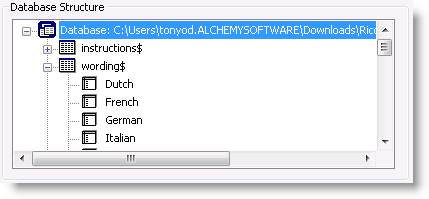
This list displays both the table names and field names of your database. As you click on each table name, the data content of this table will automatically be displayed in the SQL Preview panel. This is an aid to the Engineer to help locate translatable content in a database.
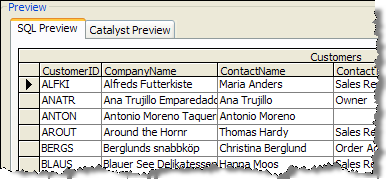
Once translatable content has been identified, it now needs to be extracted into Alchemy CATALYST. to do this we need to write a SQL Query. In our example. the worksheet wording contains translatable content. So we need to write a small SQL Query to extract all the content from this table. Select * from [wording$]is the SQL Query that is sufficient from our purposes. Enter this into the SQL Query window,
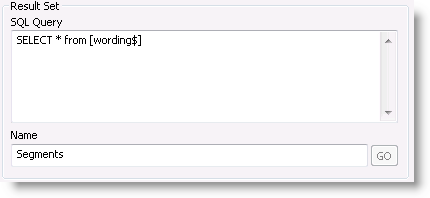
The output of an SQL Query is referred to as a Results Set and we need to give this a name. Name this Result Set Segments and click the GO button to run this query against the database, You can have several SQL Queries and Results Sets for your database, so it's helpful to give them meaningful names. These names will appear in Alchemy CATALYST and can provide additional context to your translators when working on your database.
Each result set will be stored in the Result Set Structure window.
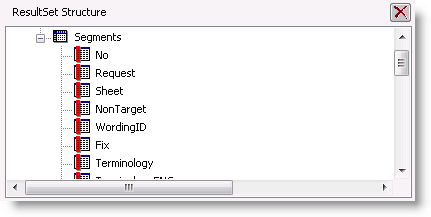
To view the content of a saved Result Set, click on it to display it in the SQL Preview window.
|
|
To delete a Result Set, click on it and select the |
In this tutorial we want to translate the Fix English field. To extract this from a Result Set, click on it and drag it from the Result Set and drop it on the Localisable Object icon in the Project TTK window. When you drop it select New Source Text from the popup menu. This indicates that this text is to be treated as source text in your project during translation.
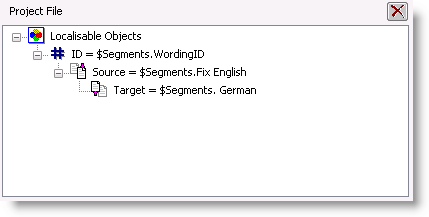
This creates an assignment between the Result Set and the Project TTK. This assignment is important as it is used later when updating translations back into the database.
|
|
There are three assignment possibilities. New Source Text, New Translation Text and ID Value. These are used to create assignments between Result Sets and other internal fields of your Project TTK. |
Press Save to store all this information in a DDF file. Call this DDF file Spreadsheet.ddf. This can now be used to insert the translatable data from the database into a project which can then be translated.
Click on the root of your project and select Insert Files. Select Spreadsheet.ddf and press OK to insert the translatable content of your database into a project.. You can now save this project and send it out to a translator for translation.
|
|
Once the DDF file has been inserted into Alchemy CATALYST, you no longer need a live connection to the database. Essentially, a snap-shot of the data is now stored in your project. You can now translate this in the normal manner. |